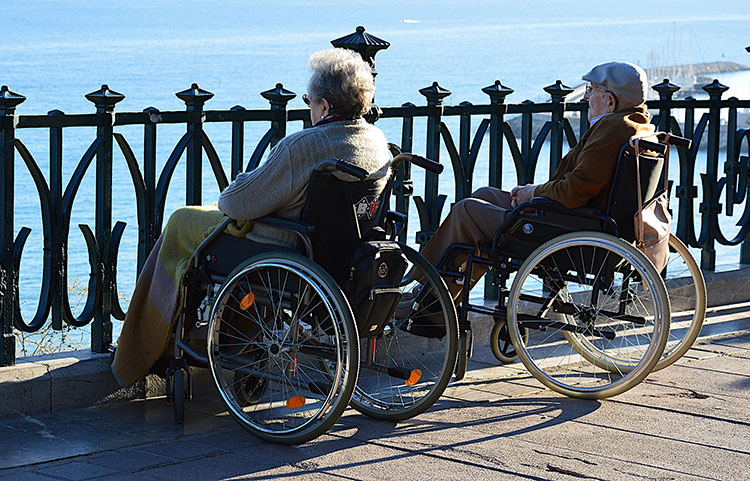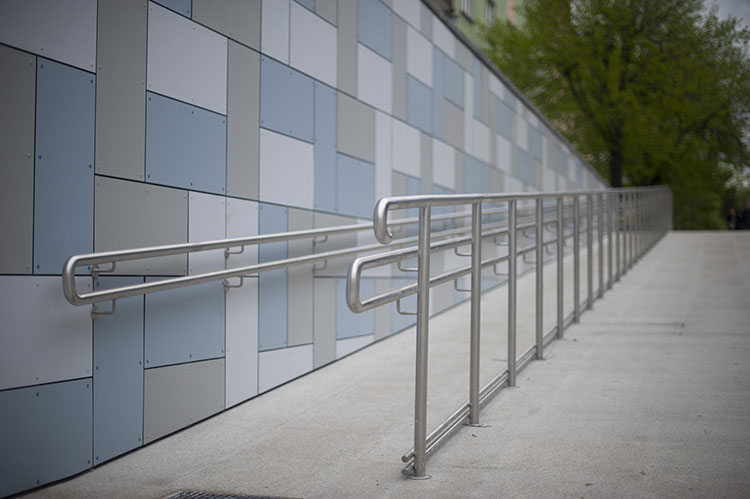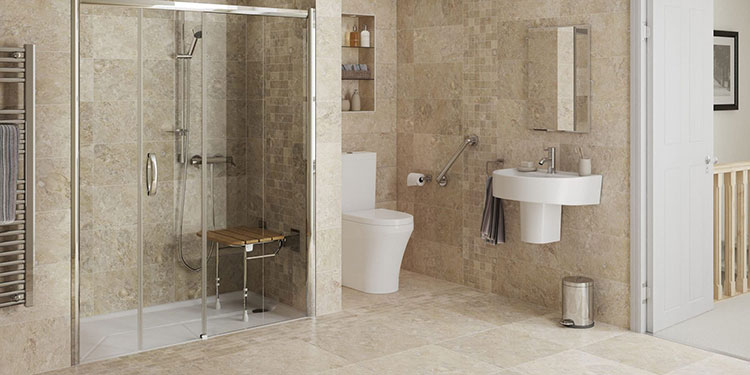Table of Contents
Handicap Accessible Apartments
Apartments come in all shapes and sizes, from compact studios to spacious three-bedroom units. They come with and without balconies, in quiet suburban areas and bustling urban centers. You can find apartments with amenities galore – from apartment gardens and upgraded gourmet kitchens to spa-like, spacious showers. But what if you need to make your apartment handicap accessible?

One thing that can be surprisingly tough to find in apartment housing is accessibility for handicapped people. This creates hurdles for folks who use walkers and wheelchairs, for example. When it comes to how to make your apartment handicap accessible, there are specific guidelines that will help. Whether you’re a really good landlord working to make changes to some of your units or someone who is in the market for an accessible apartment, here are the features many people with disabilities look for.
Designing Apartment Handicap Accessible Entryways

Accessibility starts from the outside of the building, meaning that stairs need to be replaced or covered with a wheelchair ramp in order to make a wheelchair-accessible entryway. Doorways should be wide enough to easily accommodate someone in a wheelchair or using a walker. ADA guidelines (which apply to the common areas in modern apartment buildings in the United States) require doorways to be a minimum width of 32 inches.
In addition to offering wide doorways, installing offset hinges will offer even more clearance when the door is opened all the way. If possible, consider adding an automatic door opener to further help those who may need assistance coming and going from the building. Doorway thresholds should be flat to allow wheelchairs and walkers to pass through without sticking.
Creating Accessibility in the Kitchen
When working to make an apartment handicap accessible, the kitchen is a big area where care must be taken to lay things out in a thoughtful manner. This means designing a kitchen with plenty of room for a wheelchair to maneuver (including removing some floor cabinets to allow someone in a wheelchair to roll right up to the countertop).
Countertop height is also a concern. Standard kitchen counters are 36 inches high, which puts them out of reach for most wheelchair-bound individuals. In order to make them easily accessible, kitchen counters should be installed at 30 inches high (or even as low as 27 inches).
How to Make Your Apartment Bathroom Handicap Accessible

Besides the kitchen, apartment bathrooms are another area that have specific requirements to make them handicap accessible. Rather than sinks installed within a bank of cabinetry, pedestal or wall-mounted sinks are best to offer up-close access. Single-lever faucets are also ideal; these feature one lever that is moved up, down, and to the left and right to turn the water on, off, and change the temperature.
It’s also a must to install a handicapped accessible, roll-in shower. This allows easy access for someone in a wheelchair, as well as elderly individuals who may have trouble stepping into a tub or over a raised shower threshold. A raised toilet is another must, as it can be difficult for some people with disabilities to maneuver from a wheelchair (or even from a standing position) on to a toilet with a lower height. Installing grab bars – from bars by the toilet to bars in the shower – is also a helpful safety feature.
Additional Accessibility Features
There are a number of other apartment features that are truly helpful to anyone with mobility issues. Flooring is a big consideration; thick carpeting, for example, can make wheelchair movement difficult. Instead, opt for hard flooring that is non-slippery while offering enough traction to make maneuvering safe and easy. Hardwood is an excellent choice, as is ceramic tile and certain kinds of laminate flooring.
While it does take time and diligence to learn how to make an apartment handicap accessible, understanding the most important factors will make life much easier – whether it’s for yourself, a family member, or your residents.
Finally, if you’re investigating the best features for a handicap accessible apartment, a personal alarm system can help give residents and their family members peace of mind. Although they vary according to brand, these systems generally feature two-way speakers that can be permanently installed in the apartment, as well as a wearable pendant carried by the resident. The pendant also contains a two-way speaker and is often equipped with technology such as fall detection. If the wearer has some sort of emergency, this puts them in easy contact with a specialist that can send help and notify family.

